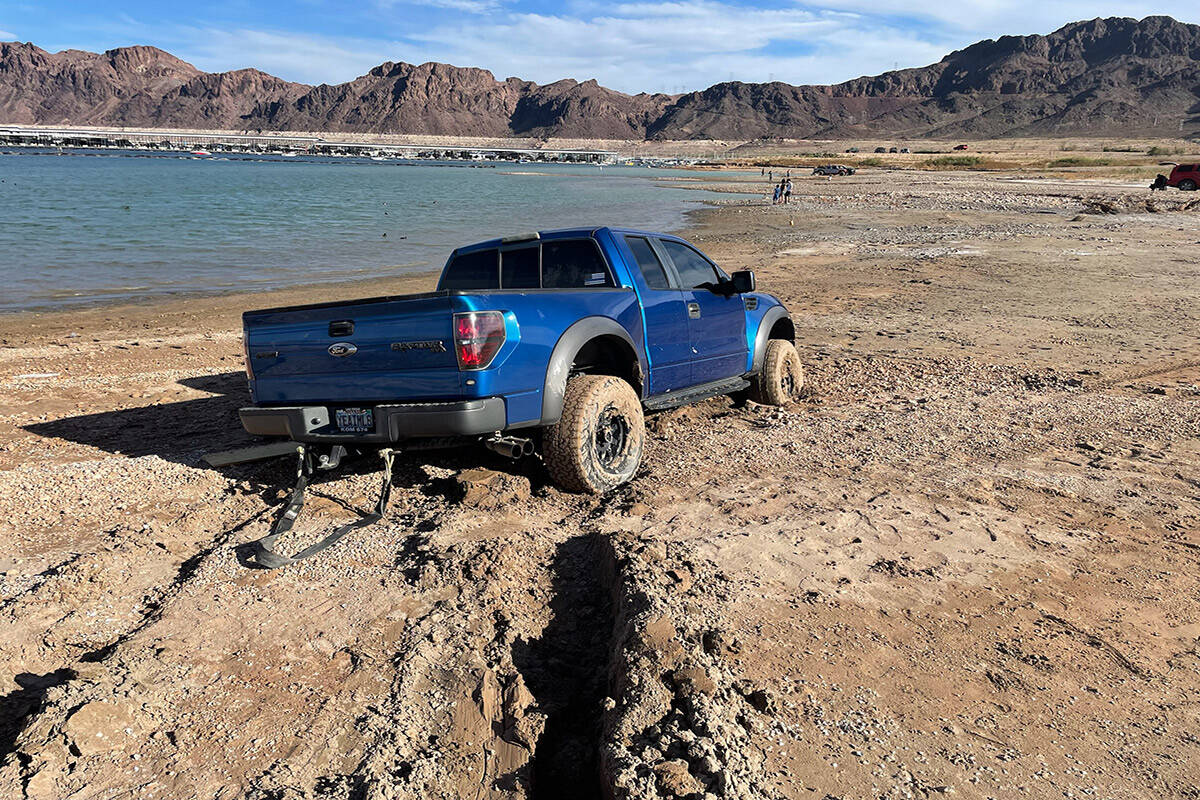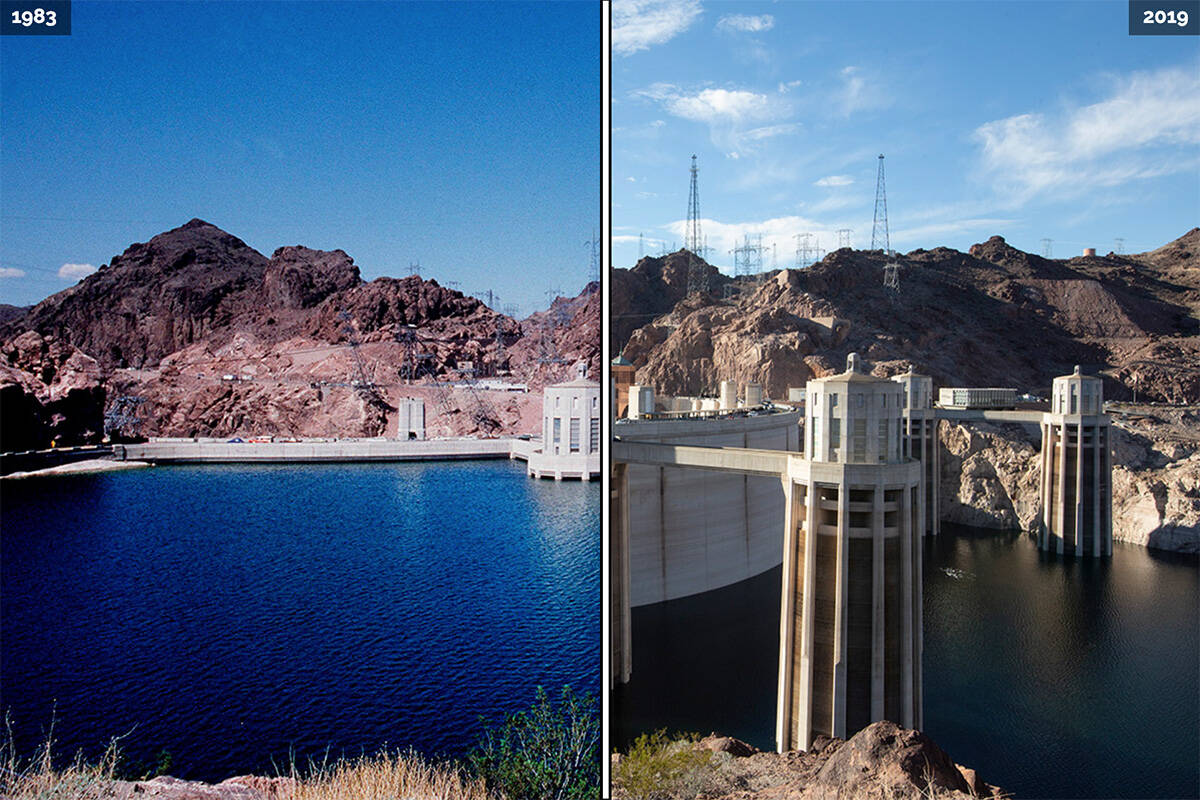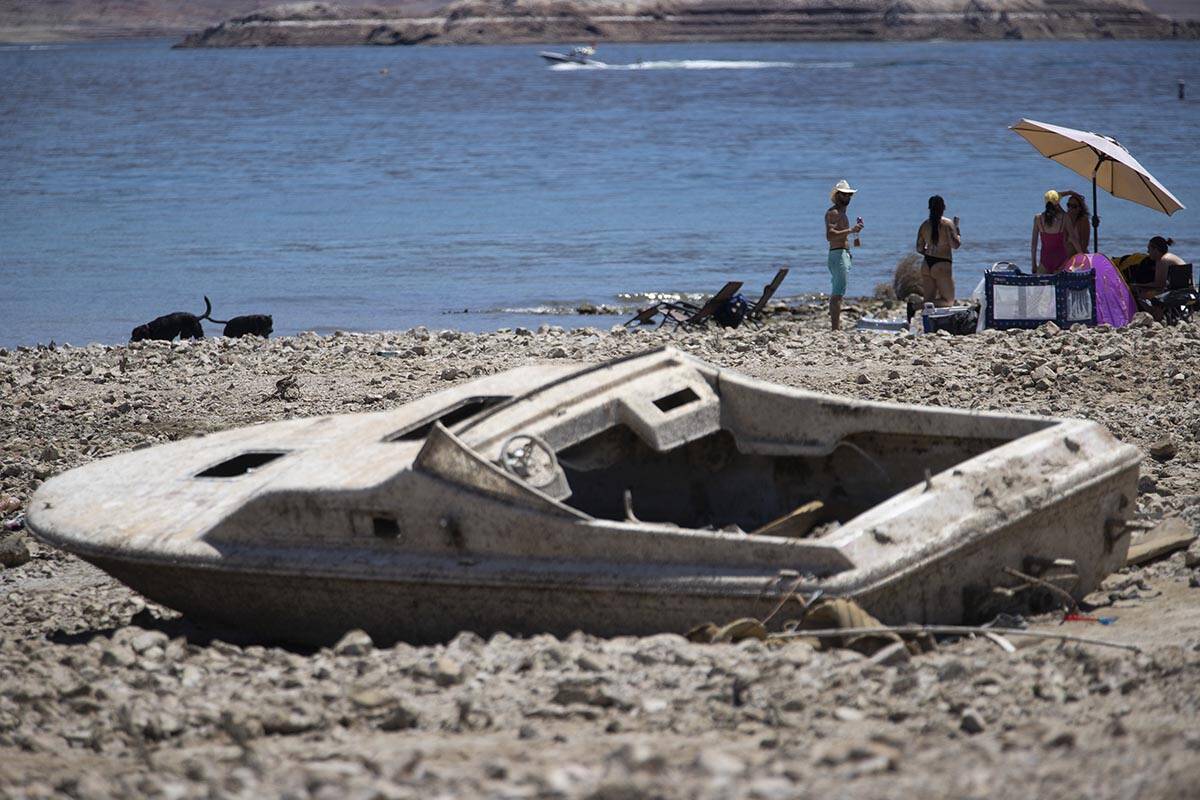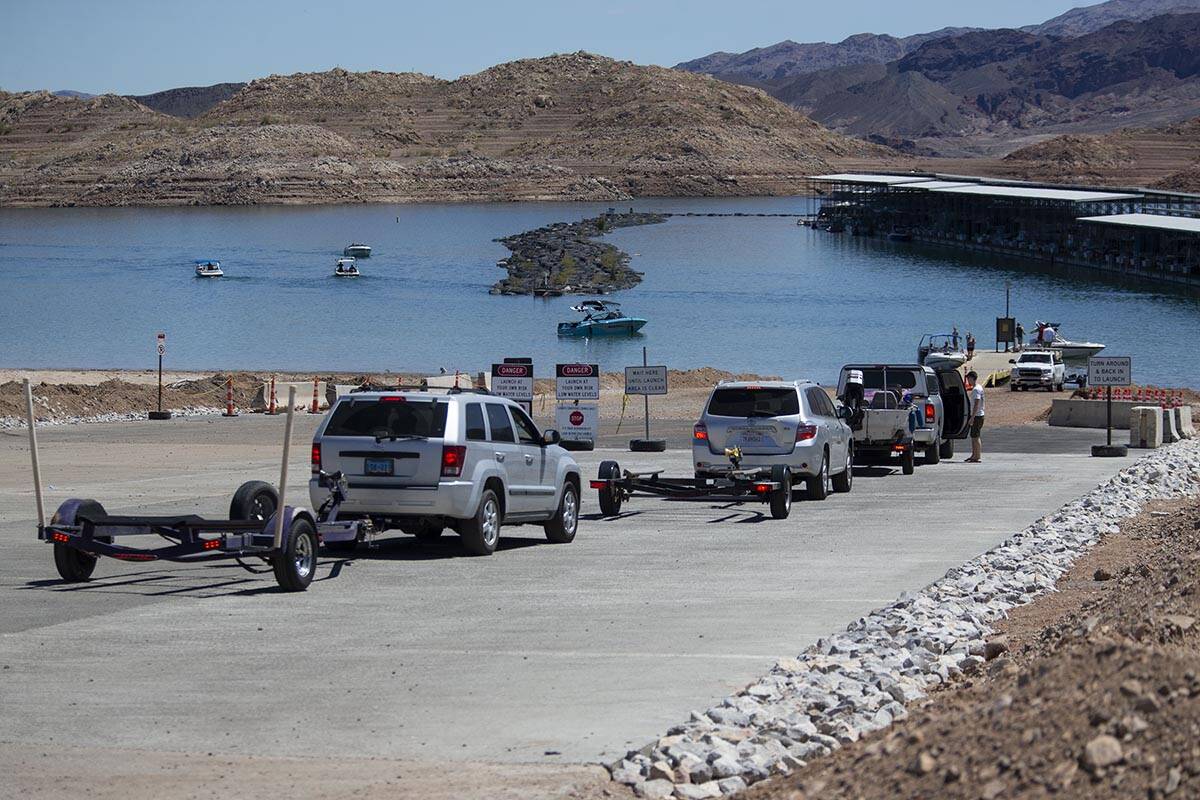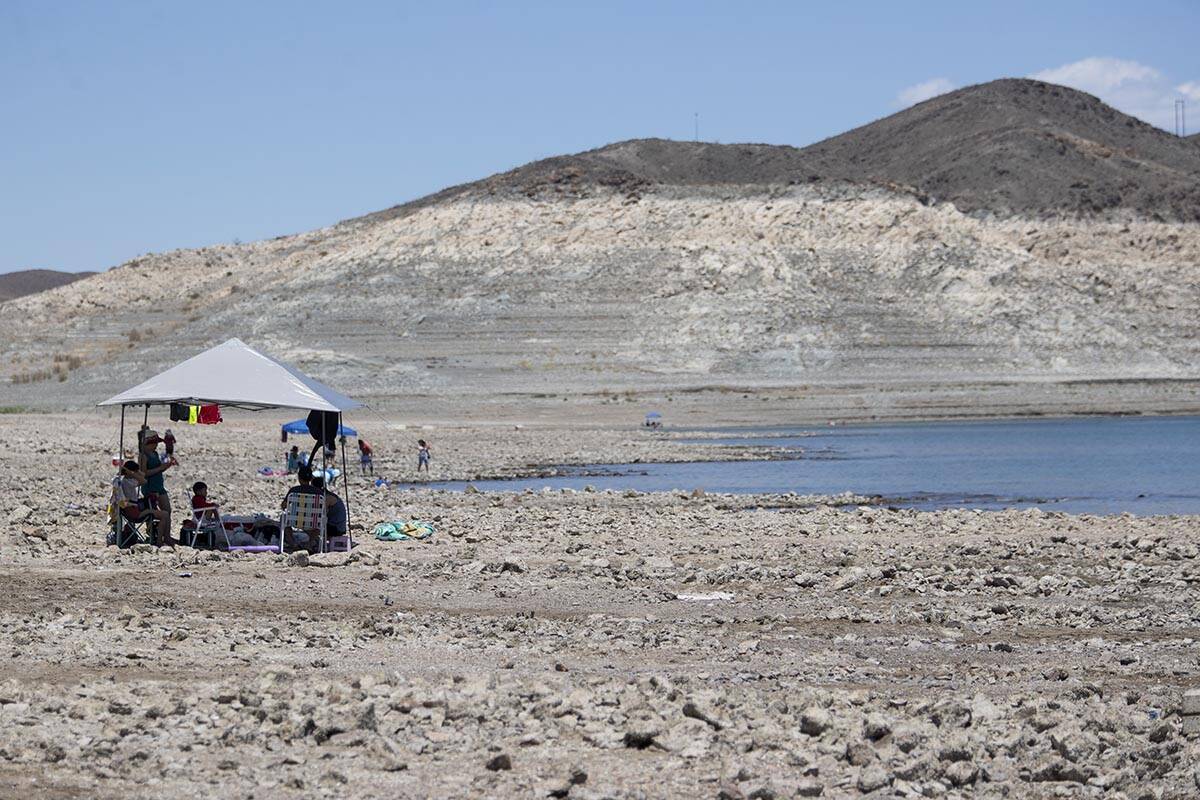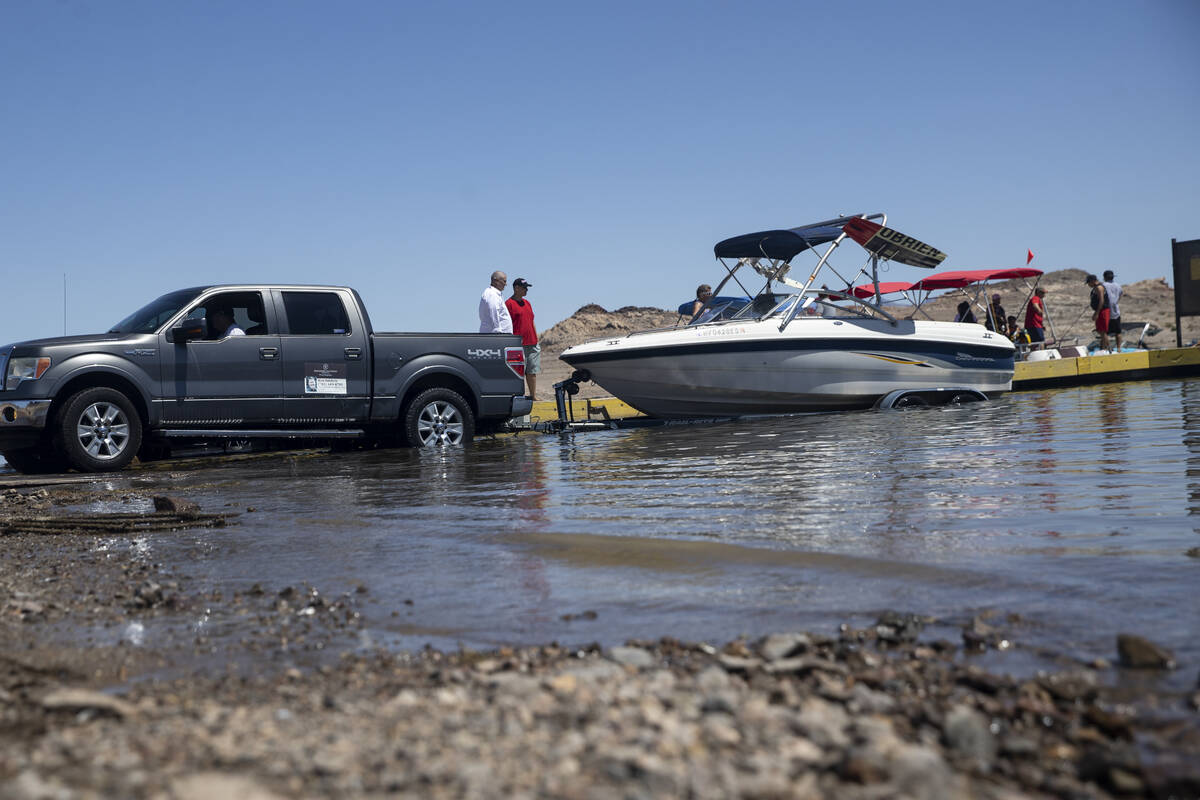Newly exposed shorelines at Lake Mead causing problems
In the midst of dropping water levels and newly exposed shorelines at Lake Mead, its look and operations are changing.
On Wednesday, the water in Lake Mead was at 1,047.61 feet, down about 16 inches from the previous week and almost 7 feet from a month ago. It is projected to drop another 30 feet in the next two years, according to the Bureau of Reclamation.
The lower water level is causing new shorelines to be exposed, creating more risks and difficulties for visitors to Lake Mead National Recreation Area.
“Newly exposed land near the water is a combination of mud and silt that is dense and difficult to navigate,” the park’s public affairs office said in a statement. “As a result, vehicles, vessels and people could — and have — become stuck in the mud. The desert sun … can harden the beach’s top layer of dirt, creating a false sense of stability that hides several feet of dense, unstable mud. This can leave vehicles, vessels and people trapped many feet deep, requiring a tow removal at personal expense or even a park ranger rescue.”
According to the public affairs office, those people who get stuck are personally responsible for all the expenses that come with it and that cost can range from $600-$1,200.
If someone does get stuck, Southern Nevada Off-Road Recovery, a nonprofit organization, offers free recovery services.
“We are working with the park service,” said Anthony Peterson of SNORR. “We had 38 recoveries this past weekend.”
He said 35 of those were at the lake.
“We don’t charge people when we go out,” said Peterson. “We accept donations.”
He said the recovery drivers also accept tips.
Those who need help after getting stuck at Lake Mead can contact SNORR through Facebook or at 702-706-2330. If a park ranger comes across someone who is stuck, someone at the incident command center will contact the group.
The declining water level is also making it more difficult to boat or swim at Lake Mead.
“As water levels go down, the park is seeing things come up in the lake: from sunken boats to natural rock formations,” warned the public affairs office. “Just because you can’t see something doesn’t mean it’s not there.”
For Lake Mead boaters, there is also just one launch ramp available to use, which could cause longer wait times.
Currently, Hemenway Harbor is the only one available. It reopened with an extension May 12 after being closed for renovations to accommodate the lower water level.
Echo Bay’s launch was closed May 11 when the water dropped below 1,060 feet.
“The Echo Bay launch ramp was constructed for boat launching down to a lake level elevation of 1,060 feet and has been extended in the past to accommodate recreational boating access,” the National Park Service said in a May 6 news release. “However, the lake level is now at 1,053.72 feet elevation, and due to a combination of the area’s unique topography constraints and continually declining water levels, the park anticipates the Echo Bay launch ramp will close indefinitely pending relocation.”
The lake’s other launch ramps at Callville Bay, Boulder Harbor, Temple Bar and South Cove had all been closed previously due to the low water levels at Lake Mead.
All six Lake Mohave launch ramps are open, according to the park’s website.
Las Vegas Review-Journal reporters Marvin Clemons, Emerson Drewes, Taylor Lane, Glenn Puit and Sabrina Schnur contributed to this report.
Contact reporter Celia Shortt Goodyear at cgoodyear@bouldercityreview.com.

